AssessmentsPlus™ Tutorial: Compound Assessment
Compound Assessment carries out a holistic review of absorption, distribution, and elimination to inform you prior to modeling your compound in GastroPlus®. Within a Compound Assessment, primarily when you have entered measured properties for your compound, you can include a comparison of properties with those predicted from a chemical structure.
To run a Compound Assessment, a Compound (preferably with available measured data entered), a Physiology with a PK model, and a Dosing Schedule are required.
In this tutorial, we will cover:
Compound Assessment for a compartmental PK model
Open GPX™ and, in the Dashboard view, click on the icon next to Select to open an Existing project.
Click on Browse and navigate to the C:\Users\<user>\AppData\Local\Simulations Plus, Inc\GastroPlus\10.2\Tutorials\Compound Assessment and select the project “Compound Assessment” by clicking on it and clicking Open.
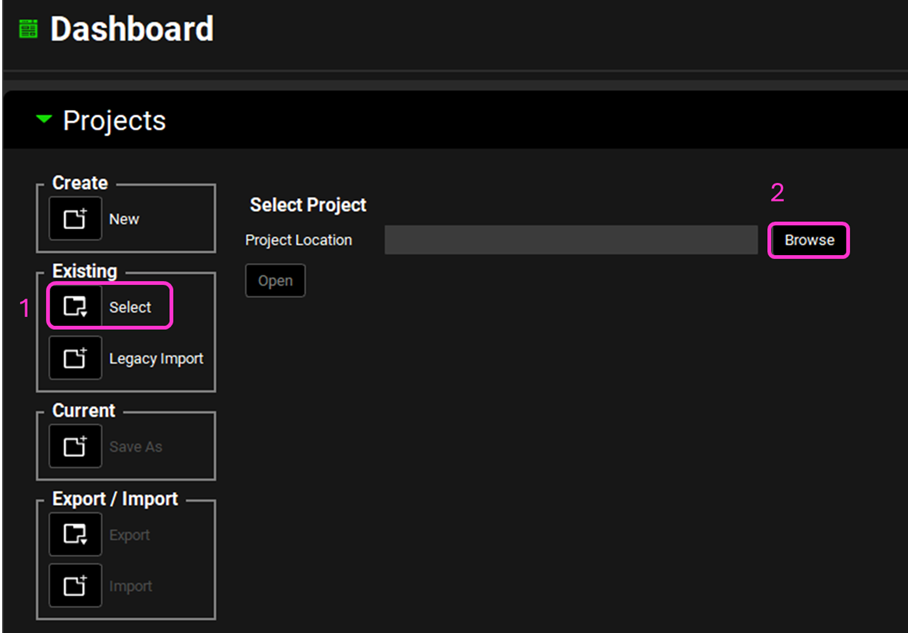
Navigate through the views to familiarize yourself with the assets contained in this project.
Click on the AssessmentsPlus™ view in the navigation pane and then click on Add. Leave the Assessment type as Compound, enter the name “Midazolam in vitro”, and click on OK or press Enter.
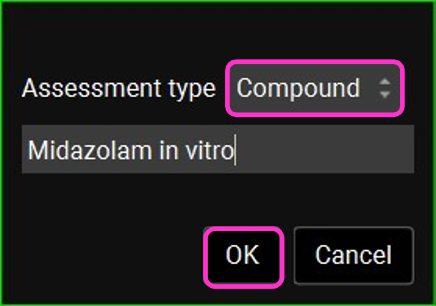
Ensure that the selections for Compound, Physiology, Dosing Schedule, PK Model Type, and Compartmental Model are as below.
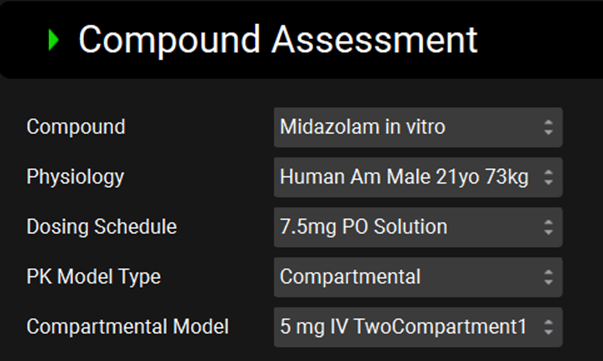
Toggle on Compare to ADMET Predictor, click on Select File, select the Midazolam.mol file, click on Open, and then click on Assess.
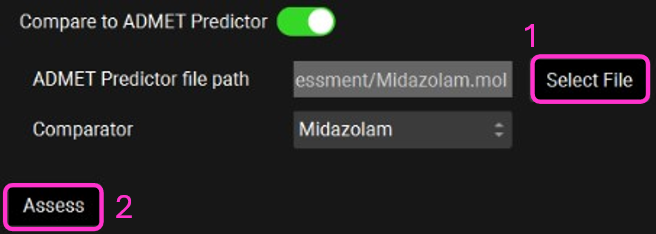
Review the advice to identify characteristics such as the BCS Class, lipophilicity, pKa values, extent of distribution, and clearance classification.





Compare measured properties with predictions.






Identify any key points for consideration when modeling your compound.


Compound Assessment for a PBPK model
Continue with the project from the Compound Assessment for a compartmental PK model, or follow steps 1 to 6 from above. In both cases, set the PK Model Type to PhysiologicallyBased before clicking on Assess.
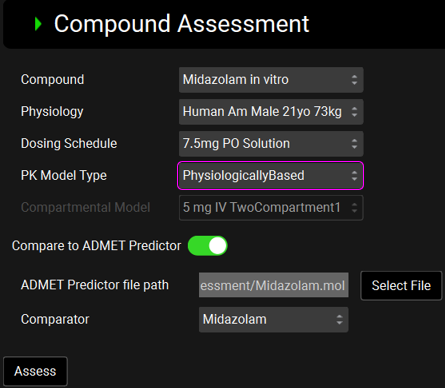
Review the advice to identify characteristics such as the BCS Class, lipophilicity, pKa values, nature and extent of distribution, and clearance classification.



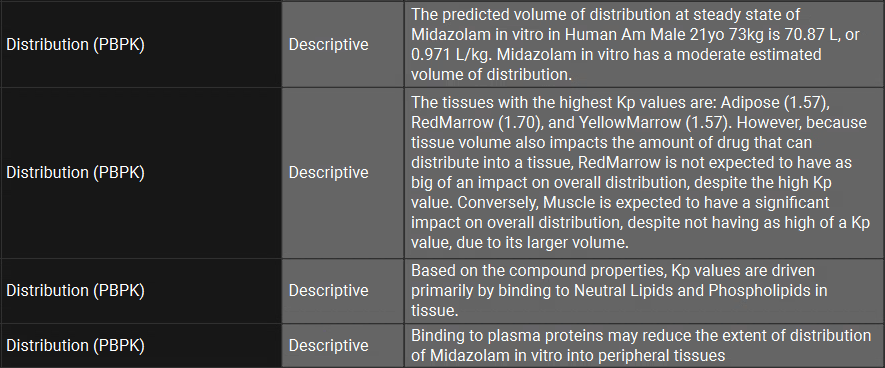

Compare measured properties with predictions.





Identify any key points for consideration when modeling your compound.


